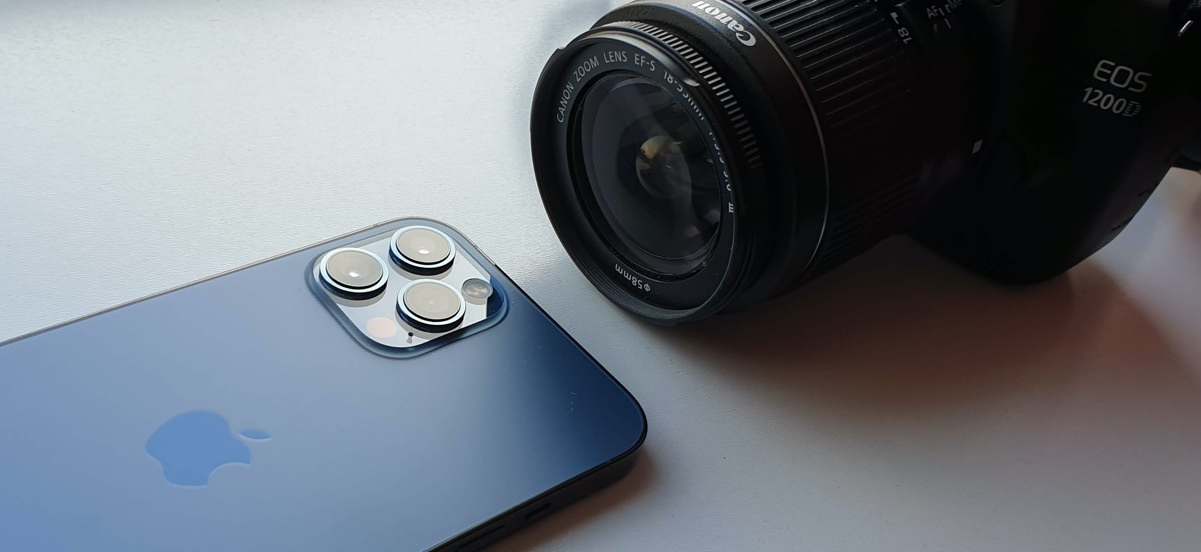
The 'phone vs DSLR' question is as interesting as always, but why each of the test devices? Despite my love for the Lumia 950 range, I'm convinced that the iPhone 12 Pro Max in ProRAW capture mode is the pinnacle of image quality on phones right now. Don't worry, I'm not advocating cheating by twiddling RAW parameters later on (on either device, in this case), but I use ProRAW capture mode because the iPhone then omits any populist sharpening and edge enhancement. Other salient points about this particular camera phone are factory-aligned and white-balanced cameras with three lens zoom factors. There's OIS on the 2.5x telephoto camera and next-gen sensor-shift stabilisation on the main camera (as on more expensive DSLRs than the one below), all in a stainless steel and reassuringly heavy frame.
While the Canon EOS 1200D DSLR was something I'd had for a while, it's a very solid - and obviously way heavier - choice and often used as a 'starter DSLR'. The 18MP APS-C sensor isn't stabilised, but hand shake is less of a problem than in phones because of the sheer mass of the hardware - inertia keeps the body relatively still during exposure. As with all DSLRs, there are a bazillion options and modes, but the 'Auto' mode is excellent and the logical place to start - this isn't a DSLR review! The only change to full auto here is that I didn't let the Xenon flash fire in low light situations - I wasn't shooting people, after all, so there wouldn't have been much point in trying to light something tens of metres away.
With the hardware being so different, I have a bucket load of notes and caveats:
- Yes, yes, I could have picked a higher end DSLR, heck I could have sourced a few fancy zoom lenses, but that's not the point here. I'm trying to keep things as simple as possible on the DSLR end while going as high end as I can on the phone camera front - can I get them to meet in the middle? In short, don't shout at me in the comments about how such and such a DSLR or lens are better!
- Framing and resolution are different in many shots, as one might expect from two radically different devices - I've tried to keep the comparison crops and scales as similar as possible so that you can make up your own mind about pros and cons, etc.
- In a couple of cases, the DSLR shot isn't wide enough - I take full responsibility, but it's jolly hard remembering to manually wind the zoom out after two decades of camera phones which default to their main camera's full view when turned on!!
As usual on this site, most photos were taken on full auto and handheld, as a regular user would do. No tripods or RAW editing sessions needed!
Let's pit the results against each other, using our Famed Interactive Comparator (FIC). All 1:1 crops are at 900x500 for comparison, though I've put up the originals, for you to download if you want to do your own analysis.
| Note that the interactive comparator below uses javascript and does need to load each pair of images. Please be patient while this page loads, if you see a pair of images above each other than you've either not waited long enough or your browser isn't capable enough! You ideally need a powerful, large-screened tablet or a proper laptop or desktop. This comparator may not work in some browsers. Sorry about that. On Windows 10 Mobile, use the 'AAWP Universal' UWP app, which handles the comparator very competently (see the tips in the app's help screens) |
Test 1: Touristy snap
A picturesque pub, with its front in shade, just to make the cameras do a little work... Here is the overall scene:
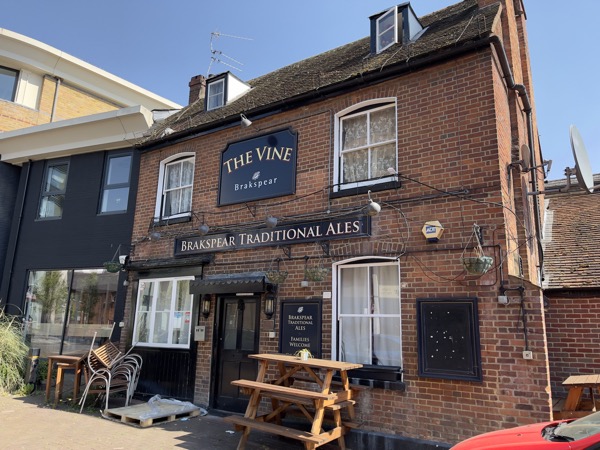
You can grab the original photos from the iPhone 12 Pro Max and Canon EOS 1200D, for your own analysis.
To look at the images in more detail here, here are fairly central 1:1 crops, from the iPhone and then the DSLR, just wait to make sure the page has fully loaded and then use your mouse or trackpad pointer to compare the images:
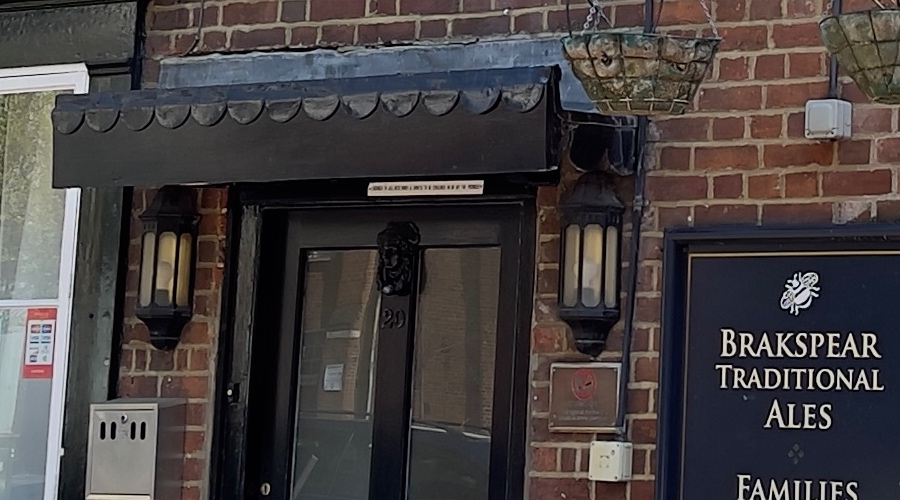

Forgive the slightly different crop framing (see the notes above), but as you might expect, even in shade, this sort of simple snap is easy meat to top cameras, even in phones. Even at the pixel level, crop framing aside, it's hard to pick a winner in terms of actual detail.
Apple iPhone 12 Pro Max: 10 pts; Canon EOS 1200D DSLR: 10 pts
Test 2: Another pub, another sign...
A different pub, this time zooming in to capture the striking pub sign - again (by coincidence) in slight shade because its angle. So a test here of tricky lighting and a need for 4x (or so) zoom. Here is the overall scene:
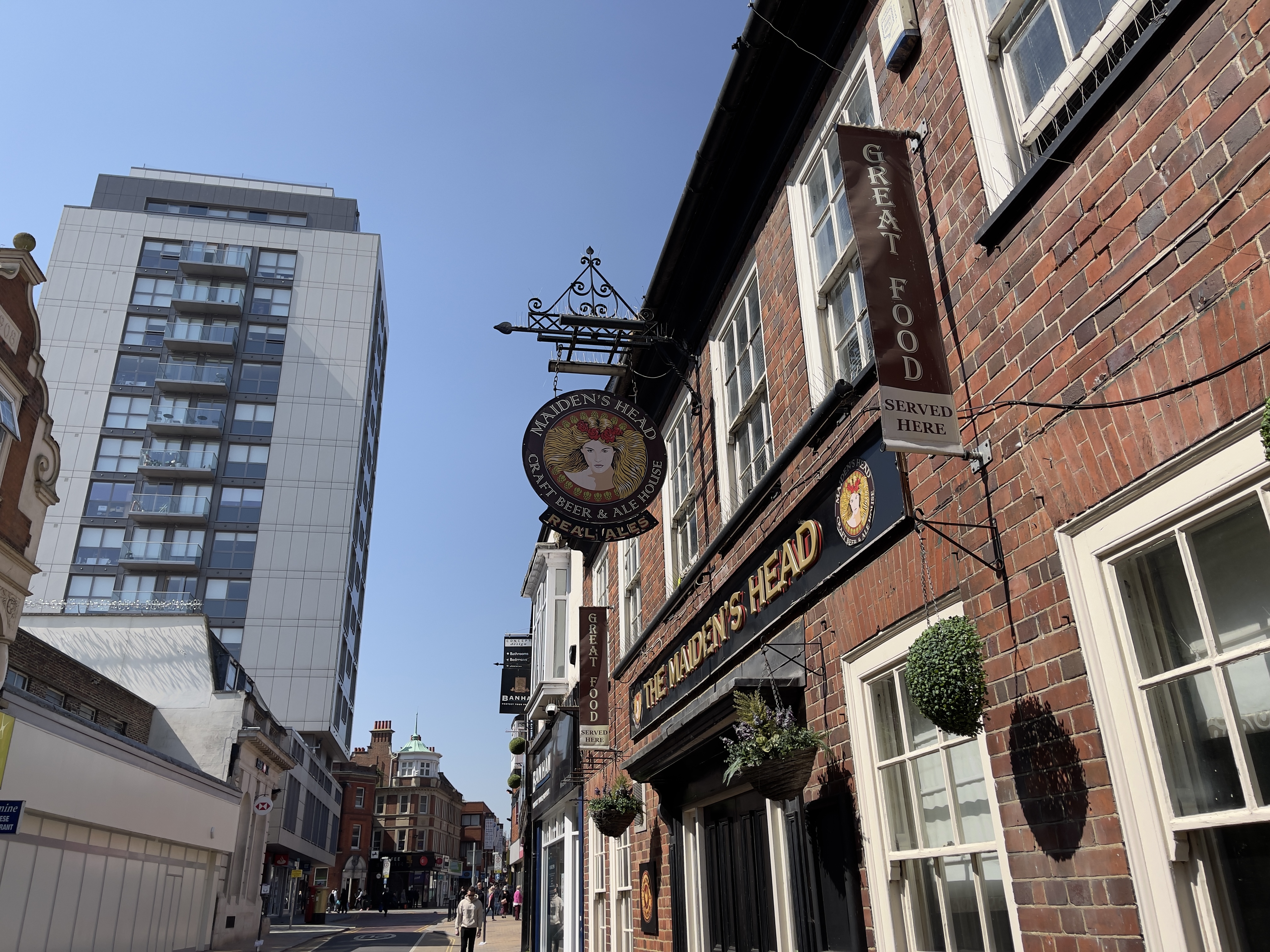
You can grab the original photos from the iPhone 12 Pro Max and Canon EOS 1200D, for your own analysis.
To look at the images in more detail here, here are fairly central 1:1 crops, from the iPhone and then the DSLR, just wait to make sure the page has fully loaded and then use your mouse or trackpad pointer to compare the images:
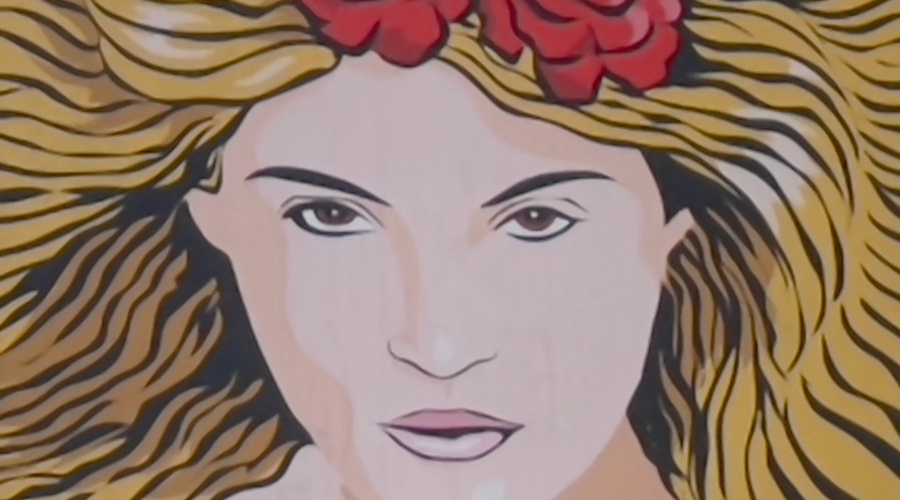
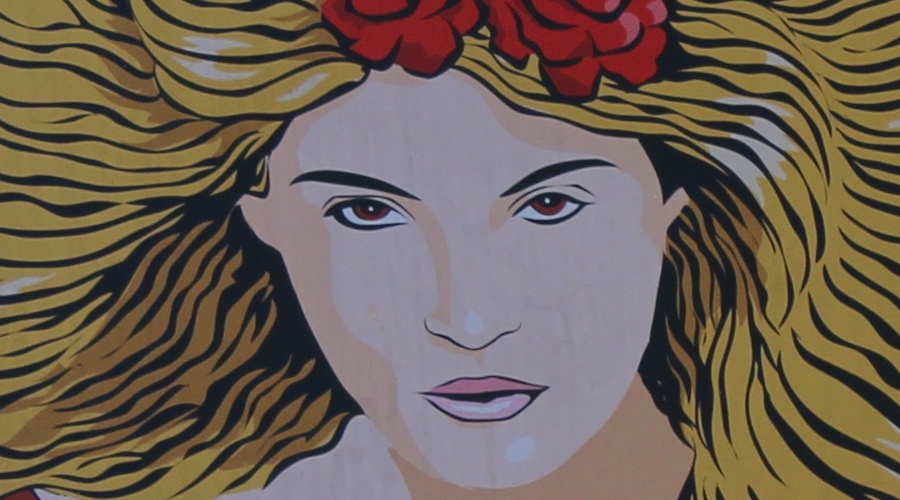
A slender win for the larger zoom optics in the DSLR, I think, with better contrast and colours. For a phone camera though, the iPhone did very well indeed and there's not that much in it.
Apple iPhone 12 Pro Max: 9 pts; Canon EOS 1200D DSLR: 10 pts
Test 3: Macro detail
Yet again in shade, this is a tricky and arty shot to pull off, looking inside a statuesque poppy. You can grab the original photos from the iPhone 12 Pro Max and Canon EOS 1200D, for your own analysis.
To look at the images, here are scaled photos from the iPhone and then the DSLR, just wait to make sure the page has fully loaded and then use your mouse or trackpad pointer to compare the images:
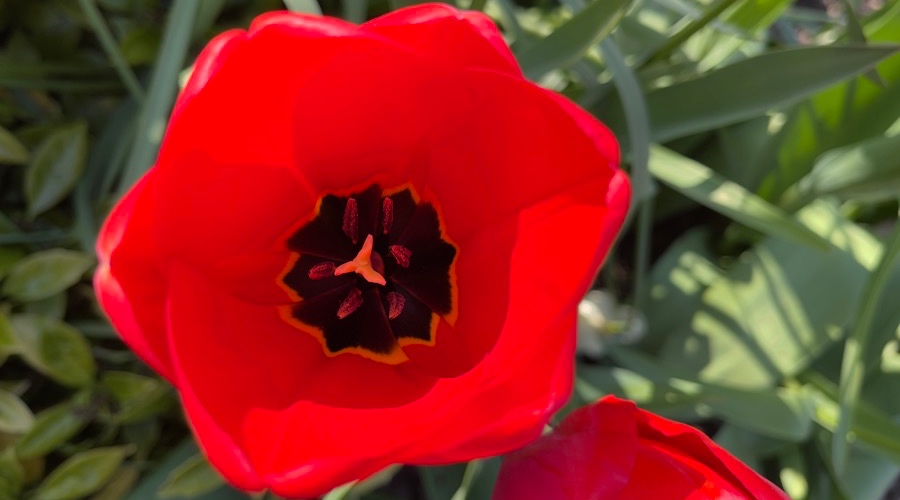
The most striking feature in the poppy is the centre, of course, with rich purple-black centre section, ringed in yellow and with bright yellow stalk. Just stunning. And the Canon DSLR nails it, at the expense of over-exposing the main poppy body. While the phone camera does a great job on the main poppy body but the centre is muted and the magnificence of those colours are missed. Although a little more trial and error at capture time could have fixed all this, I have to give a narrow win to the Canon DSLR for getting the shot I wanted on the first try.
Apple iPhone 12 Pro Max: 9 pts; Canon EOS 1200D DSLR: 10 pts
Test 4: Arty macro, this time in full sun
Moving to direct sun and perfect light, the challenge here is to focus close-up and produce arty shallow depth of field. You can grab the original photos from the iPhone 12 Pro Max and Canon EOS 1200D, for your own analysis.
To look at the images, here are scaled photos from the iPhone and then the DSLR, just wait to make sure the page has fully loaded and then use your mouse or trackpad pointer to compare the images:
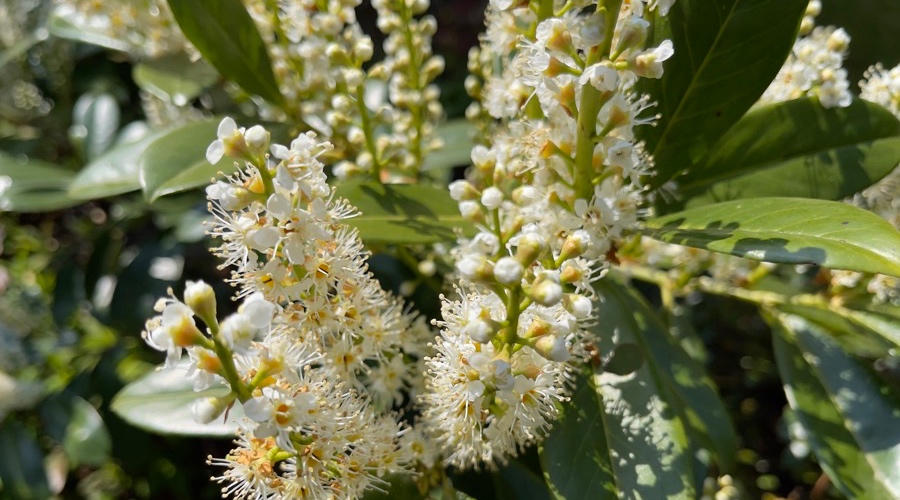
Both photos are perfect, of course, though I was surprised a little that the iPhone's smaller optics produced the shallower depth of field. Still, I saw the chance for a great snap and both delivered in spades. Lovely colours and detail.
Apple iPhone 12 Pro Max: 10 pts; Canon EOS 1200D DSLR: 10 pts
Test 5: Delicate zoomed nature
Some gorgeous blossom, up high, so good opportunity for plenty of zoom (about 3x). Here is the overall (unzoomed) scene:
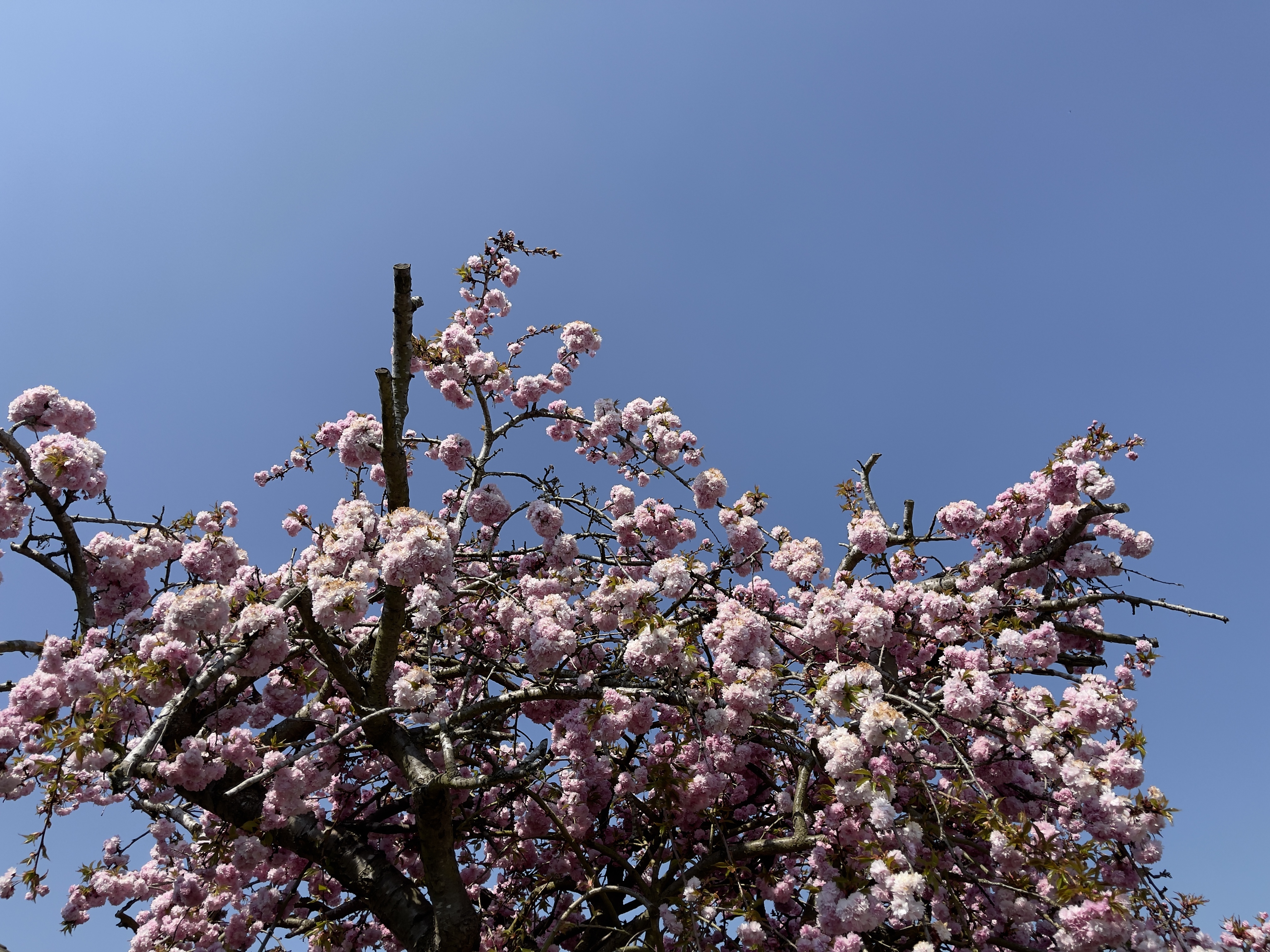
You can grab the original photos from the iPhone 12 Pro Max and Canon EOS 1200D, for your own analysis.
To look at the images in more detail here, here are fairly central 1:1 crops, from the iPhone and then the DSLR, just wait to make sure the page has fully loaded and then use your mouse or trackpad pointer to compare the images:
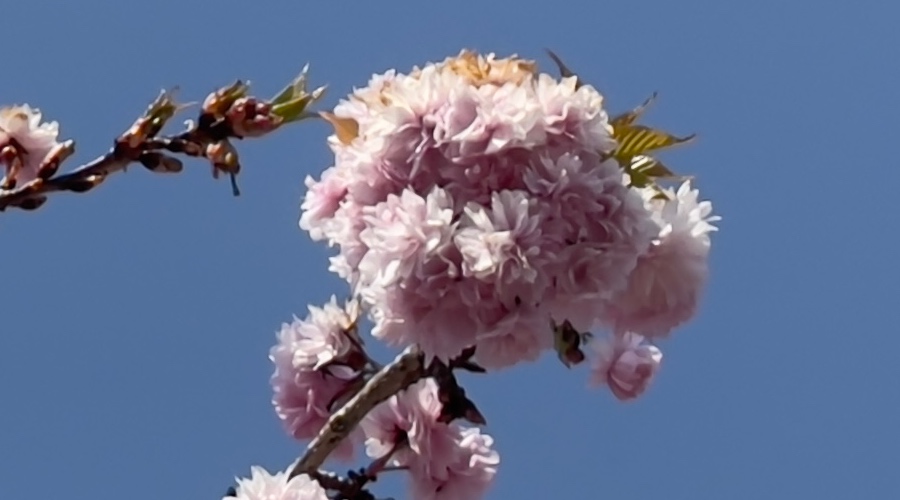
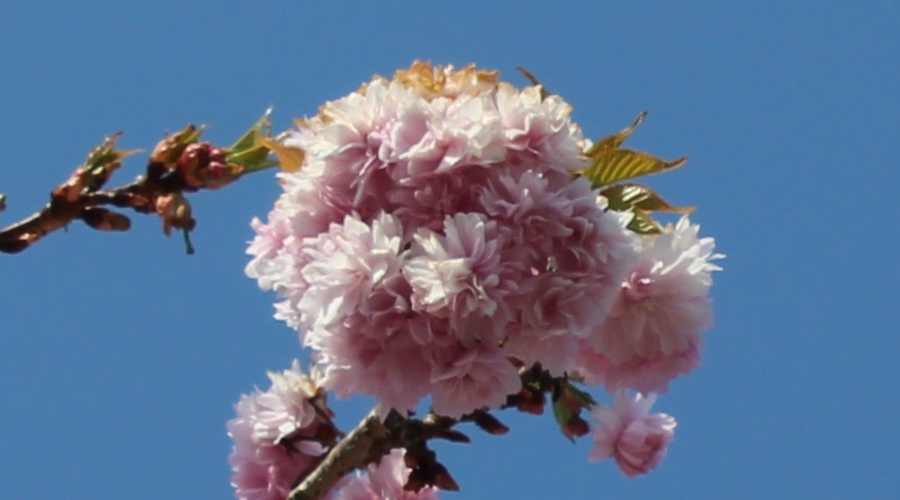
Both zoomed photos are terrific - even at the pixel level at full stretch zoom, they're natural and with all the delicate colours. The DSLR's pixels are just a little more convincing and confident, but not enough to sway me from another tie.
Apple iPhone 12 Pro Max: 9 pts; Canon EOS 1200D DSLR: 9 pts
Test 6: HDR landscape
Not shooting into the sun (I'll get to that), but simply a scene with bright and shady portions. You can grab the original photos from the iPhone 12 Pro Max and Canon EOS 1200D, for your own analysis.
To look at the images, here are scaled photos from the iPhone and then the DSLR, just wait to make sure the page has fully loaded and then use your mouse or trackpad pointer to compare the images:
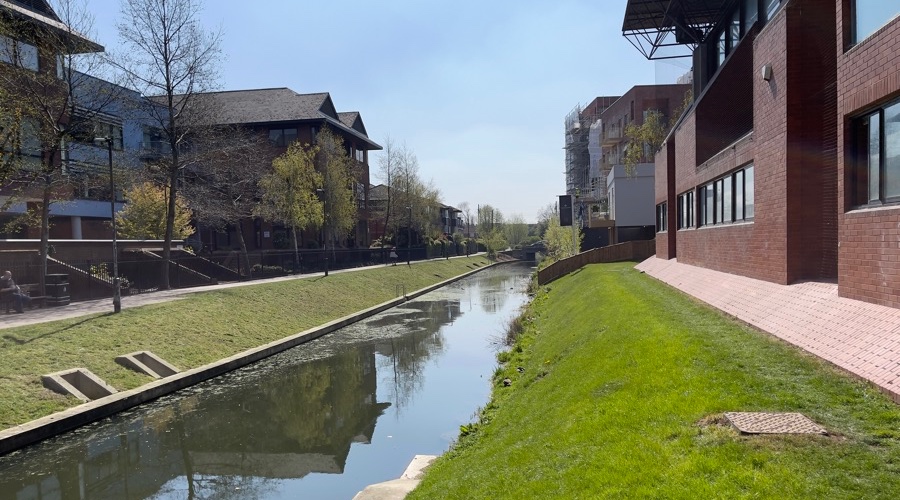
This is the first of several examples in this feature where the smartphone's ability to take multiple exposures and combine them for genuine HDR photography in the blink of an eye comes into its own. Look at the bluer sky, the details in the shadows - for a DSLR to achieve this, forethought would be needed and several separate shots would have to be manually composited in an editing package. Whereas the phone just... does it. Immediately and automatically.
Apple iPhone 12 Pro Max: 10 pts; Canon EOS 1200D DSLR: 9 pts
Test 7: Freezing action
The idea here was to freeze the multiple jets of water with minimal effort. Yes, yes, DSLR enthusiasts, I know that with some effort and a few minutes fiddling with settings I could have reduced the shutter time on the Canon and compensated with aperture to achieve what the phone did. But this is all on full 'auto' on both in these tests. You can grab the original photos from the iPhone 12 Pro Max and Canon EOS 1200D, for your own analysis.
To look at the images, here are scaled photos from the iPhone and then the DSLR, just wait to make sure the page has fully loaded and then use your mouse or trackpad pointer to compare the images:

'Auto' on the iPhone turned out to be 1/1500s, while it was 1/160s on the Canon, resulting in a much sharper freezing ability on the phone. What would have been interesting - and maybe I'll return to the scene - would be to try for the opposite effect, of getting a daytime long exposure, with the water smoothed into a continuous flow. Both phone and DSLR could do this, I think, the iPhone via software trickery and the Canon via manual settings. In the meantime, an easy win for the iPhone 12 Pro Max.
Apple iPhone 12 Pro Max: 10 pts; Canon EOS 1200D DSLR: 9 pts
Test 8: Continental HDR
A very European car port layout, with extremes of light and dark. You can grab the original photos from the iPhone 12 Pro Max and Canon EOS 1200D, for your own analysis.
To look at the images, here are scaled photos from the iPhone and then the DSLR, just wait to make sure the page has fully loaded and then use your mouse or trackpad pointer to compare the images:
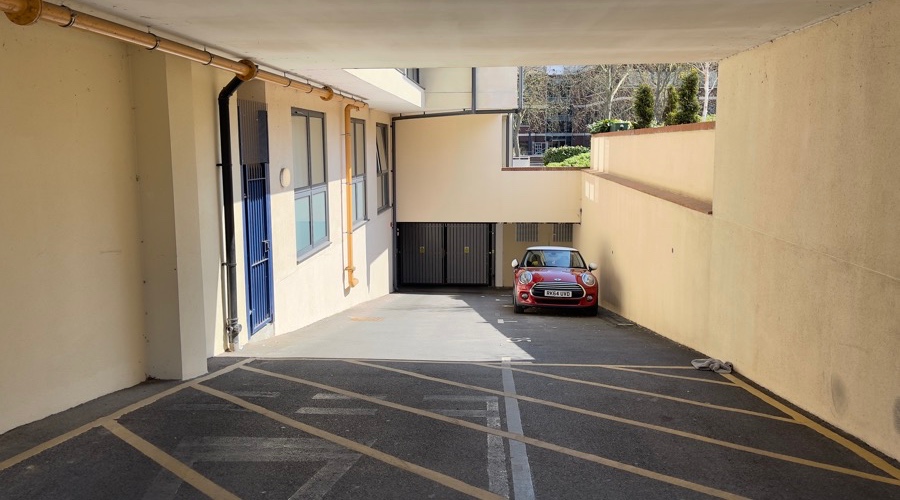
Although the DSLR photo is closer to what my eyes saw, i.e. blinding white and dark shadows, the contrast flattening of auto-HDR in the phone photo does yield more detail and without any exposure problems, so another (very) narrow win for the iPhone.
Apple iPhone 12 Pro Max: 10 pts; Canon EOS 1200D DSLR: 9 pts
Test 9: More blossom and exposure choices
Such a lovely time of year - this blossom was reaching above me to the blue sky. You can grab the original photos from the iPhone 12 Pro Max and Canon EOS 1200D, for your own analysis.
To look at the images, here are scaled photos from the iPhone and then the DSLR, just wait to make sure the page has fully loaded and then use your mouse or trackpad pointer to compare the images:
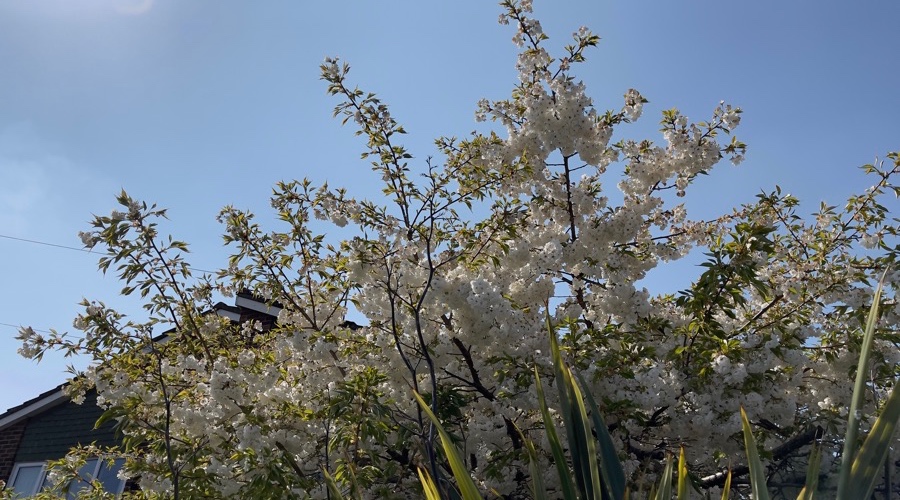
Tough to pick a winner here, since the Canon went for perfectly exposed blossom and forget the sky, while the iPhone, with HDR at its disposal, went for a perfectly blue sky and do its best with the blossom too. I like both photos and am not going to pick a winner - the DSLR's rendition of the whites is almost perfect, but the sky is just so uneven and blown out. A score draw.
Apple iPhone 12 Pro Max: 9 pts; Canon EOS 1200D DSLR: 9 pts
Test 10: Sunset
Time to start testing in lower light - this is sunset down on the Thames. And I've made it harder by shooting the sun with about 4x zoom on each, testing the cameras to their limit. You can grab the original photos from the iPhone 12 Pro Max and Canon EOS 1200D, for your own analysis.
To look at the images, here are scaled photos from the iPhone and then the DSLR, just wait to make sure the page has fully loaded and then use your mouse or trackpad pointer to compare the images:
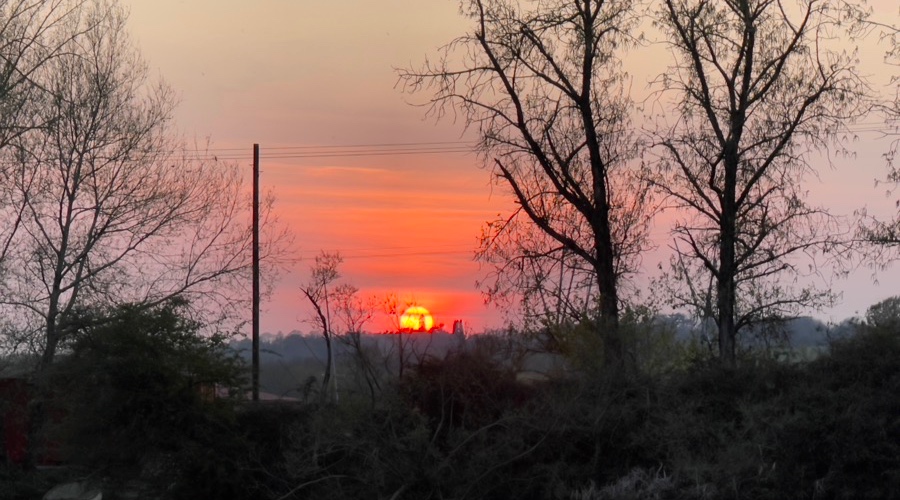
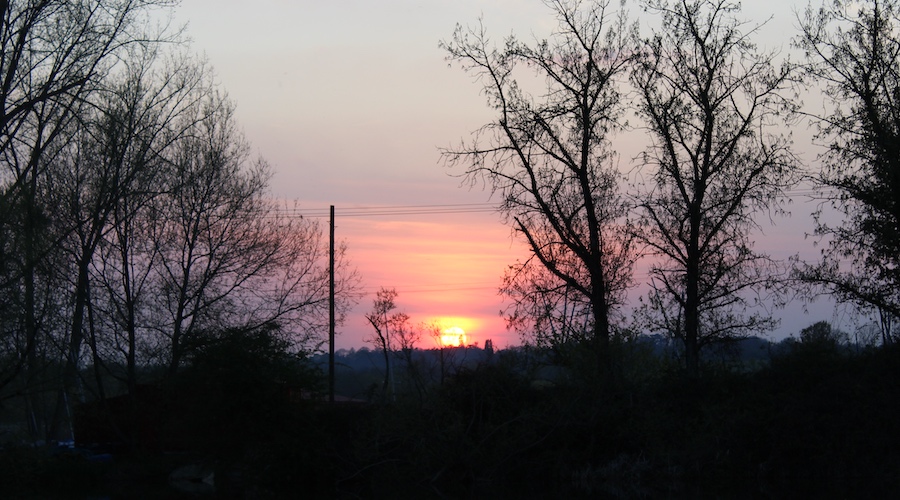
Again we see the iPhone's auto-HDR stepping in to give definition to the sun and better sky colours, while also providing shady detail in the foreground of the zoomed shot.
Apple iPhone 12 Pro Max: 9 pts; Canon EOS 1200D DSLR: 7 pts
Test 11: And now at the pixel level...
The same zoomed sunset scene, but this time looking at the pixel level - how much is being lost by each camera system?
Again you can grab the original photos from the iPhone 12 Pro Max and Canon EOS 1200D, for your own analysis.
To look at the images in more detail here, here are fairly central 1:1 crops, from the iPhone and then the DSLR, just wait to make sure the page has fully loaded and then use your mouse or trackpad pointer to compare the images:
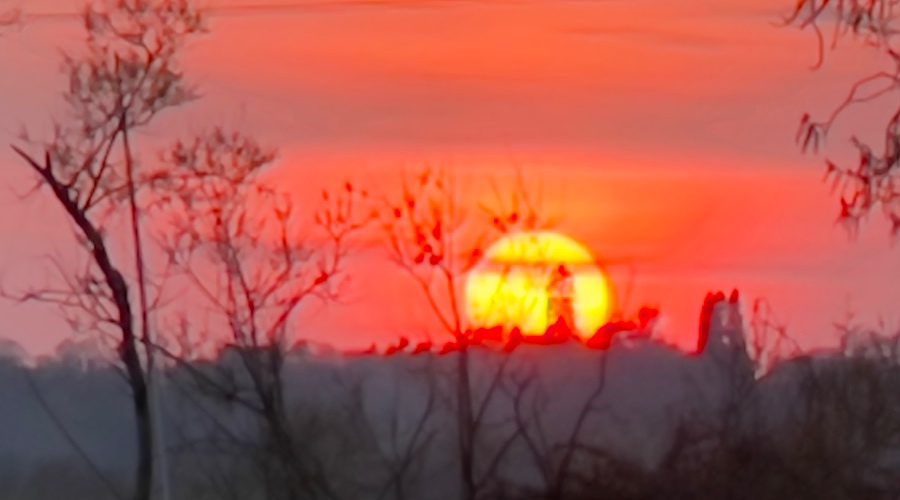
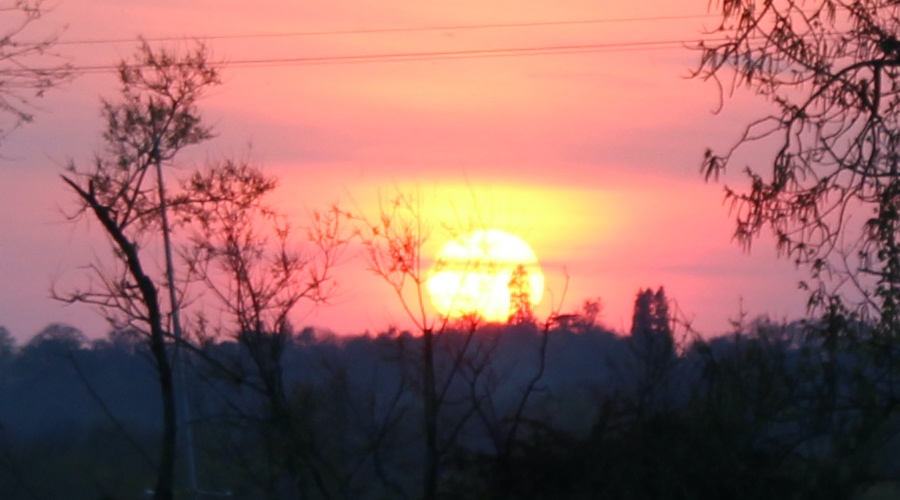
Both systems do pretty well considering the extremes of light and zoom - the DSLR has crisper details, thanks to full optical zoom all the way, but worse handling of the sun's red disk; while the iPhone 12 Pro Max has a beautifully warm red sun but the smallest twig details are getting smeared by the use of software zoom. A draw overall is fair, I think.
Apple iPhone 12 Pro Max: 9 pts; Canon EOS 1200D DSLR: 9 pts
Test 12: Dusky church
No zoom here, just very low light, about 30 minutes after sunset - the iPhone even went into its auto-night-mode. You can grab the original photos from the iPhone 12 Pro Max and Canon EOS 1200D, for your own analysis.
To look at the images, here are scaled photos from the iPhone and then the DSLR, just wait to make sure the page has fully loaded and then use your mouse or trackpad pointer to compare the images:
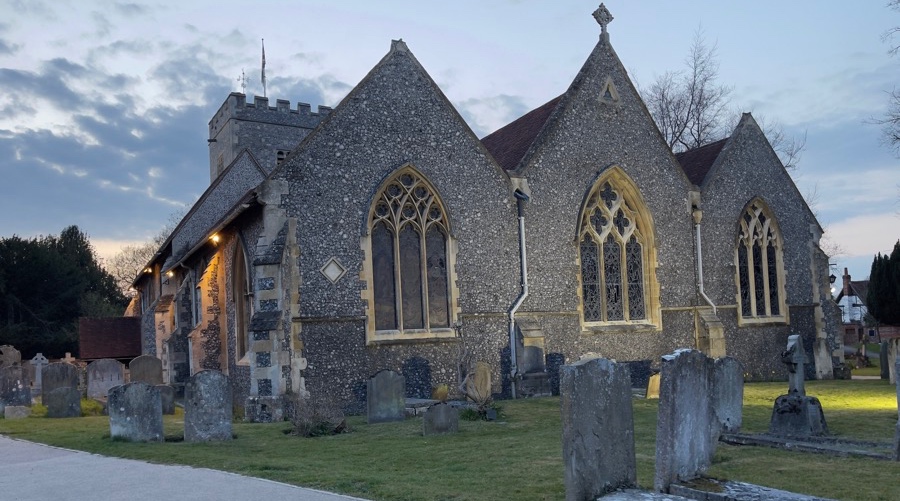
Although the DSLR shoots a very good memory of actual light levels and the scene as my eyes saw it, the computational photography in the iPhone 12 pro Max pulls out an amazing amount of detail and colour in a very challenging light environment, even coping with the sky while handling the deepest shadows. A definite win for the phone, thanks to modern multi-exposure combination techniques...
Apple iPhone 12 Pro Max: 10 pts; Canon EOS 1200D DSLR: 8 pts
Test 13: And now at the pixel level...
The same low light, dusky church scene, but this time looking at the pixel level... Again you can grab the original photos from the iPhone 12 Pro Max and Canon EOS 1200D, for your own analysis.
To look at the images in more detail here, here are fairly central 1:1 crops, from the iPhone and then the DSLR, just wait to make sure the page has fully loaded and then use your mouse or trackpad pointer to compare the images:
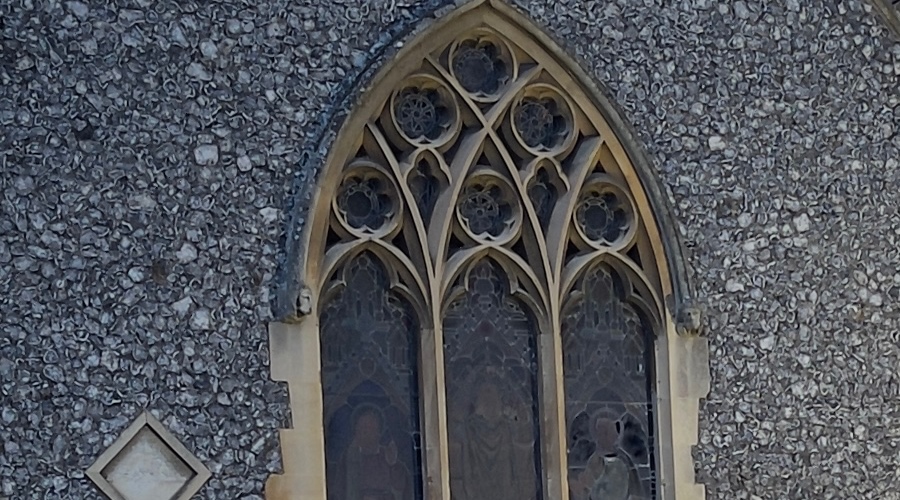
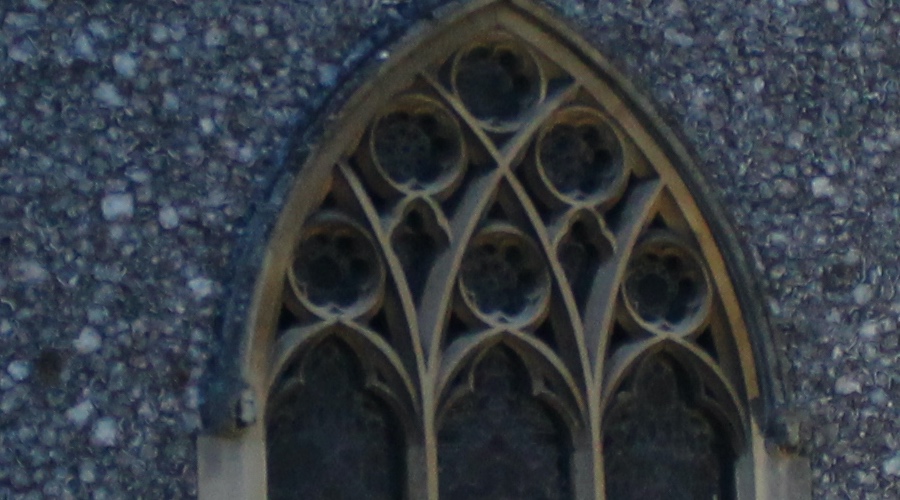
Although the framing isn't exact here (sorry), you get the idea. The sheer amount of detail captured by the iPhone in a shady stained glass window on the 'wrong' side of a church in the dark 30 minutes after sunset is... extraordinary. The DSLR's image isn't bad as a whole, but you can see noise and uncertainty creeping in here - understandably, given the conditions.
Again, DSLR enthusiasts will (rightly) point out that I could have brought a tripod with me and mounted the camera on this for a 1 second exposure, etc. But that's not how I test. I'm looking at using these gadgets as the man in the street would. At least, how they would if they were hanging around a night time church yard looking a bit nerdy...(!)
Apple iPhone 12 Pro Max: 9 pts; Canon EOS 1200D DSLR: 8 pts
Test 14: Night time
Dead of night and no natural light whatsoever. You can grab the original photos from the iPhone 12 Pro Max and Canon EOS 1200D, for your own analysis.
To look at the images, here are scaled photos from the iPhone and then the DSLR, just wait to make sure the page has fully loaded and then use your mouse or trackpad pointer to compare the images:
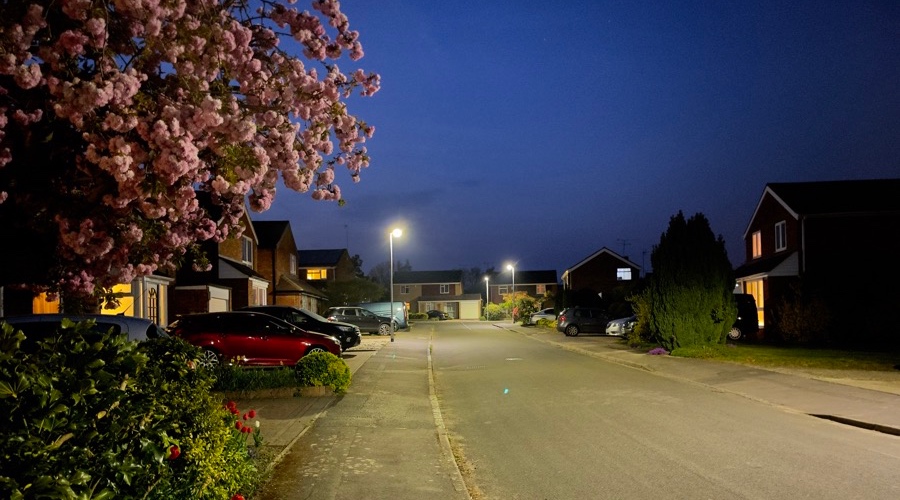
The Canon did pretty well, though suffered from poor focussing in such low light and this was the third attempt after two blurry ones! The scene was pretty much as it was to my eyes, aside from the 'moon' artefact, top right - this seems to be some internal reflection from the LED street light. The iPhone's auto-night-mode, meanwhile, brings out genuine colours and an almost 'daytime' effect. Clearly 'wrong', yet impressive at the same time, so I'm going to give it a win, even before any pixel analysis.
Apple iPhone 12 Pro Max: 9 pts; Canon EOS 1200D DSLR: 8 pts
Test 15: And now at the pixel level...
The same time time scene, but this time looking at the pixel level... Again you can grab the original photos from the iPhone 12 Pro Max and Canon EOS 1200D, for your own analysis.
To look at the images in more detail here, here are fairly central 1:1 crops, from the iPhone and then the DSLR, just wait to make sure the page has fully loaded and then use your mouse or trackpad pointer to compare the images:
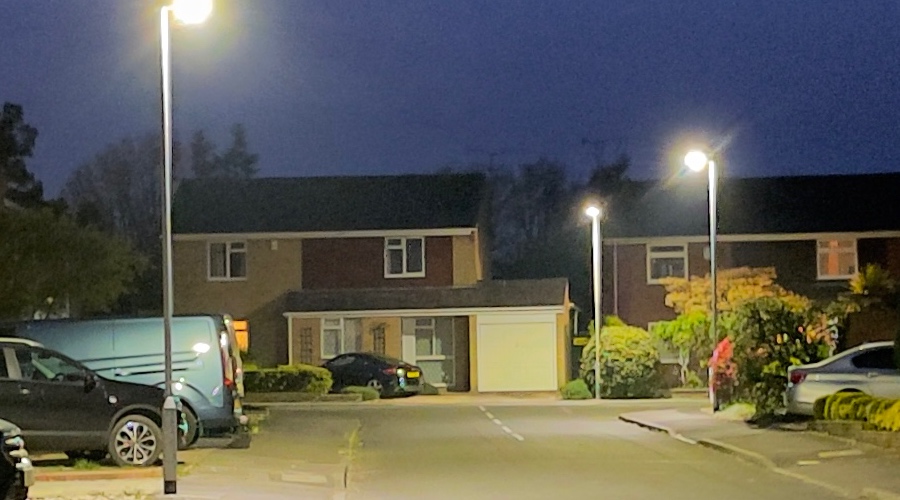

Although there's clearly a lot digital noise around, there's a marked difference in what the two devices can capture in terms of detail and colour. In the iPhone 12 Pro Max shot, down here at the pixel level, handheld, just look at the wheel trim on the distant car, or the trellis work on the wall behind. In the dark!
Again, the only way a DSLR could compete with modern phone cameras here would be to bring along a tripod and set up a long exposure.
Apple iPhone 12 Pro Max: 9 pts; Canon EOS 1200D DSLR: 7 pts
Verdict
For the record, the scores add up as:
- Apple iPhone 12 Pro Max (in ProRAW capture mode): 141 pts (/150)
- Canon EOS 1200D DSLR: 132 pts
This has been a feature of ‘two halves’, as they say in the football world. The contention that modern smartphone cameras can’t match DSLRs for quality is probably true - here I’m using the very best in the phone world in its purest capture mode, and in decent light it still can’t quite match even this starter DSLR. Meaning that any other smartphone camera would struggle, there’s simply no point in comparing the output from, say, a Samsung smartphone camera, since all the extra processing and enhancements just get in the way of sheer image quality, which the Canon here has in spades.
But the iPhone 12 Pro Max in ProRAW mode runs the Canon here very close, justifying its inclusion here. And, since this is primarily on AAWP, I think the eight year old Lumia 1020 would also come out favourably, since the original PureView algorithms produced very ‘DSLR-like’ images.
But as soon as light gets low then the best of the smartphone camera world have a chance. All the multi frame computational photography produces results that are often striking, if not entirely realistic. See the samples above as evidence. As ever, the final results and scores in a feature like this depend to a certain extent on the subjects chosen, so I accept that my choice and mix of tests played a part in shaping the outcome.
One final thing that needs pointing out is that the iPhone here was being stretched to its limits, while this is just the start of the DSLR experience - add a tripod, add some expertise, add some imagination, and even this starter Canon DSLR could be used for genuine works of photographic art. The smartphone camera, at best, can take amazingly good snaps, and for many people will take better photos, as shown in the typical shots above. But in the hands of an enthusiast, the DSLR has the potential to do more, going beyond ‘regular’ photos.
Which sounds like a cop out but it’s not. As someone who loves photography in all its forms, I’m happy to have both options available. The iPhone 12 Pro Max (or Lumia or something else really good) is fine for 98% of snaps in my life. But for something really special then even I would really enjoy thinking outside the box with a DSLR.
Comments welcome, of course. The debate will run and run, no doubt.
